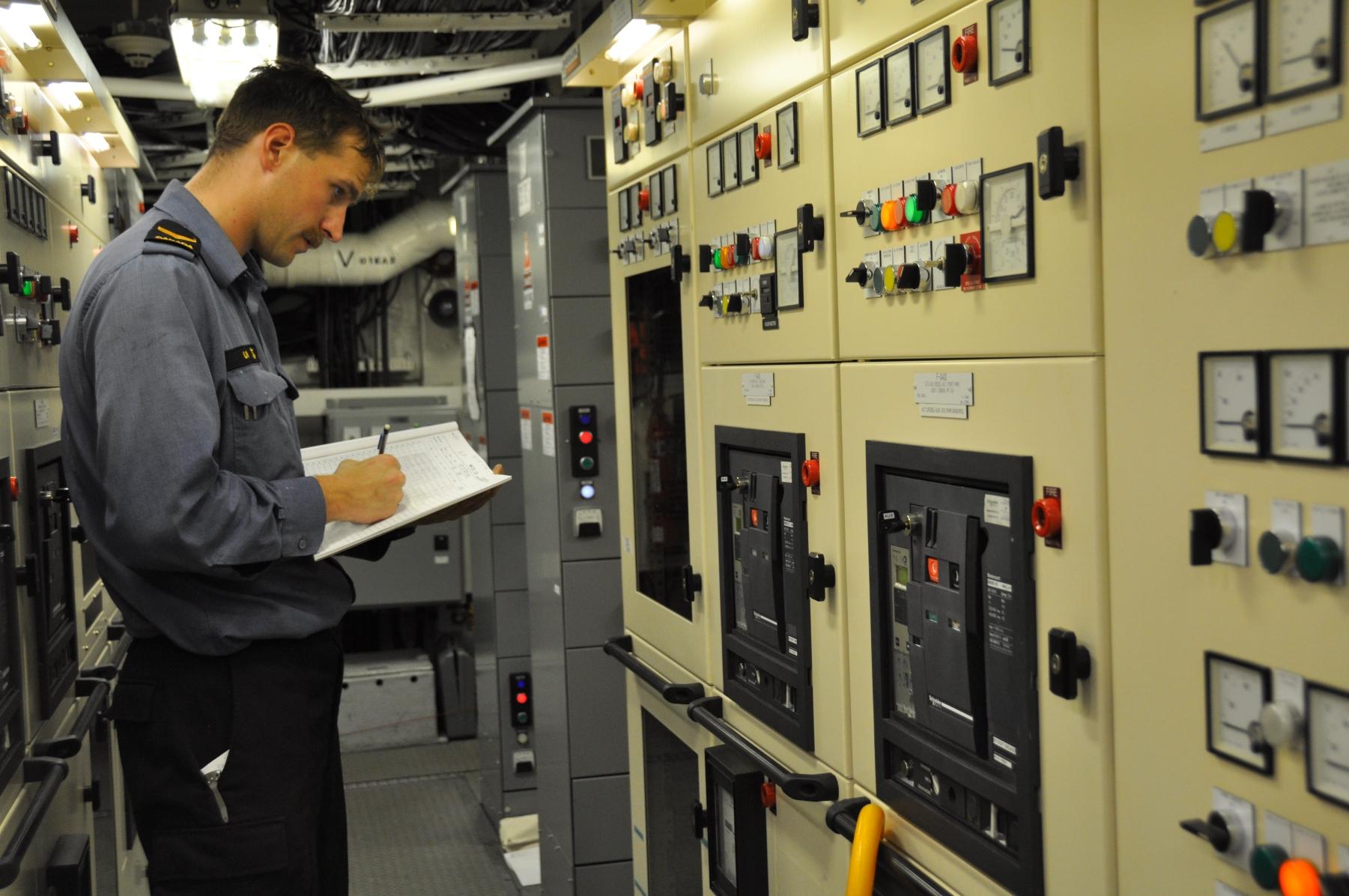By Lieutenant (Navy) Greg Menzies
When the mission is operating a warship as part of the multinational campaign against illicit trafficking in the eastern Pacific Ocean and people are depending on you, it is essential to have a warship operating at its best. To do that requires hard work, long hours and determination. Operating in a sweltering climate makes it that much more difficult, as engineers on board Her Majesty’s Canadian Ship (HMCS) Brandon found out during their last deployment on Operation CARIBBE. The largest and one of the busiest sections in the warship has six Naval Reserve marine engineering system operators, a Regular Force marine engineer, an electrical engineer and a weapons engineer.
“The warmer weather definitely keeps us busy as it has the greatest impact on our operations,” said Petty Officer 2nd Class Luc Trudeau, an electrical engineer on board Brandon. “It’s not only the air temperature and humidity that affect our mechanical and electrical systems, but the ocean temperature and salinity as well.”
 |
| Leading Seaman Kyle Uhlig, a marine engineering system operator, conducts his hourly round in the main switchboard room in HMCS Brandon while deployed to the Eastern Pacific on Operation CARIBBE. Photo: DND |
The warship’s systems include propulsion, hot and cold fresh water, refrigeration and air conditioning, as well as steering, and every system is affected by the outside temperature, humidity and ocean salinity. For example, warmer waters have higher salinity, making fresh water production at sea more difficult. Higher levels of salinity cause more strain on the Reverse Osmosis Diaphragm process pumps, which are needed to pump salt water into the system used to make fresh water.
“In this type of environment, we need to check the CAMS [Central Alarm Monitoring System] every 15 minutes compared to every hour in more northern climates found off the coast of Canada,” said Master Seaman Katherine Van Blyderveen, a marine engineering system operator on board Brandon. “We routinely conduct visual inspections; however, these become a little more thorough and temperature readings are taken more frequently to ensure we can identify any potential problems early on.”
In climates with extreme heat and humidity, the demands placed on a ship’s mechanical, hydraulic and electrical systems can result in systems malfunctioning from continuously operating in these environments.
Before sailing to warmer climates, engineers stock up on extra parts and equipment to mitigate certain challenges while at sea. “Teamwork is all it takes to prevent, diagnose and fix any problem at sea. There is nothing more satisfying than knowing that despite all the challenges of operating in a warmer climate, a little teamwork is all that is needed to keep any ship mission capable anywhere around the world,” said PO2 Trudeau.
“In this type of environment, we need to check the CAMS [Central Alarm Monitoring System] every 15 minutes compared to every hour in more northern climates found off the coast of Canada,” said Master Seaman Katherine Van Blyderveen, a marine engineering system operator on board Brandon. “We routinely conduct visual inspections; however, these become a little more thorough and temperature readings are taken more frequently to ensure we can identify any potential problems early on.”
In climates with extreme heat and humidity, the demands placed on a ship’s mechanical, hydraulic and electrical systems can result in systems malfunctioning from continuously operating in these environments.
Before sailing to warmer climates, engineers stock up on extra parts and equipment to mitigate certain challenges while at sea. “Teamwork is all it takes to prevent, diagnose and fix any problem at sea. There is nothing more satisfying than knowing that despite all the challenges of operating in a warmer climate, a little teamwork is all that is needed to keep any ship mission capable anywhere around the world,” said PO2 Trudeau.
No comments:
Post a Comment